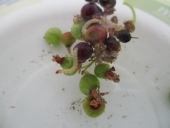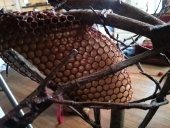posted 7 years ago
I have 15 large mature cherry trees from the 1950s, and here in the Okanagan SWD has appeared in the last few years. So far organic growers have been using Entrust, and some who wish not to spray at all are using Kootenay Covers, a fine mesh fabric to cover the trees. The covers work well, but are perhaps too expensive for large scale applications.
I have read several scientific studies pointing to the effectiveness of peppermint oil and thyme oil as repellents for the flies, and so I plan on giving that a try this year, as well as following Michael Philips Holistic Spray protocol. (Neem, EM, Liquid Fish, Kelp)
We'll see how it goes this year. We also have chickens and Muscovy ducks running under the trees to try to break the Pest cycles.









